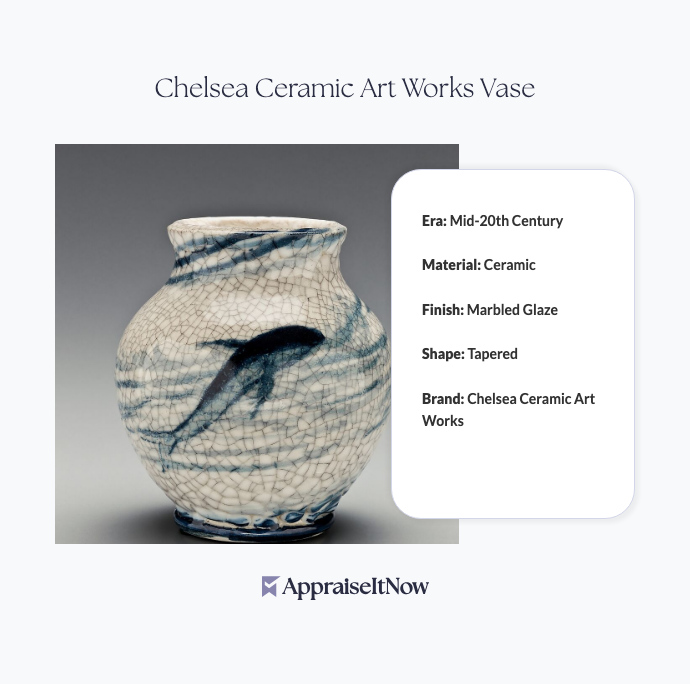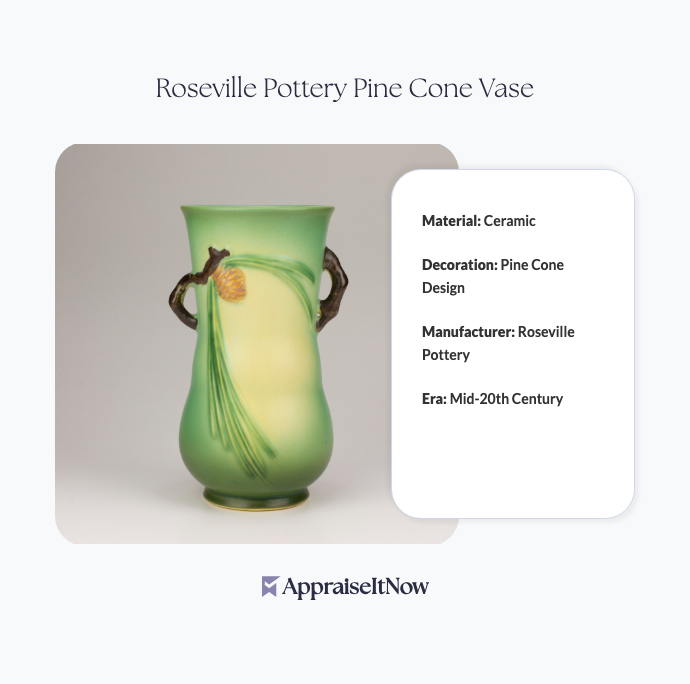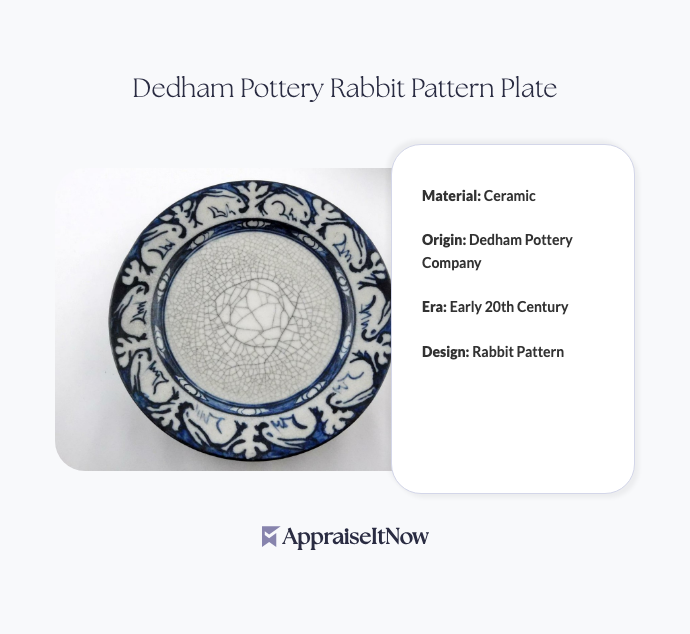<h1>How to Get Your Hampshire Pottery Matte Green Appraised</h1>
<p>Hampshire Pottery Matte Green pieces represent a distinctive and valued category within fine American ceramics, with quality examples commanding <strong>$800 to $1,200</strong> in today's collector market. If you own one of these early 20th-century treasures or are considering acquiring one, understanding how to properly appraise and evaluate it ensures you're making informed decisions about purchase, sale, or insurance purposes.</p>
<h2>Understanding Hampshire Pottery's Historical Value</h2>
<p>Your Hampshire Pottery Matte Green piece carries weight beyond its current market price. Introduced in 1910 by skilled artisans in Massachusetts, this pottery represents the height of American Arts and Crafts movement excellence. The matte green glaze—achieved through specialized firing processes—creates a distinctive velvety texture that collectors consistently seek out. Unlike glossy finishes that dominated earlier pottery production, the matte finish required technical mastery that remains highly valued today.</p>
<p>What makes Hampshire Pottery particularly desirable? The combination of limited production runs and handcrafted quality means each piece tells its own story. The pottery's minimalist design philosophy aligns perfectly with contemporary interior aesthetics, making these pieces genuinely versatile whether displayed in rustic farmhouse settings or modern minimalist environments. This timeless appeal directly translates to stable or appreciating market values, particularly for pieces in excellent condition with authentic provenance.</p>
<div class="callout tip"><p><strong>Collector's Insight</strong></p>
<p>Hampshire Pottery pieces with documented original kiln marks and intact condition typically appraise at the higher end of the $800–$1,200 range, sometimes exceeding these estimates for exceptional examples.</p></div>
<h2>What Determines Your Hampshire Pottery's Value</h2>
<p>When seeking an appraisal for your matte green piece, several specific factors directly influence its appraised worth. Understanding these elements helps you appreciate why professional evaluation matters and what documentation strengthens your piece's market position.</p>
<p>The glaze quality and finish integrity represent your first evaluation point. Original matte surfaces that have aged naturally maintain higher values than pieces that have been refinished or heavily repaired. Surface condition, including the presence of any crazing, chips, or repairs, significantly affects pricing within the $800–$1,200 spectrum.</p>
<p>Size and form contribute substantially to value assessment. Larger pieces or those with more complex, sculptural forms typically command premiums over simple vessels. Similarly, rare forms or documented special commissions can substantially exceed standard market estimates. Your appraiser will also examine whether the piece shows evidence of use versus museum-quality display condition—both have collectors, though their value implications differ.</p>
<p>The presence of maker's marks or Hampshire Pottery stamps provides crucial authentication documentation. Pieces bearing clear pottery marks, artist signatures (when identifiable), and original labels increase confidence in authenticity and can justify higher valuations. How to tell if a piece of pottery is valuable often comes down to these identifying marks combined with construction quality.</p>
<table class='appraisal-table'>
<thead>
<tr>
<th>Value Factor</th>
<th>Impact on Appraisal</th>
<th>Assessment Method</th>
</tr>
</thead>
<tbody>
<tr>
<td>Original glaze condition</td>
<td>High (+/- 20%)</td>
<td>Visual inspection, texture assessment</td>
</tr>
<tr>
<td>Form rarity</td>
<td>High (+/- 25%)</td>
<td>Comparison with documented examples</td>
</tr>
<tr>
<td>Maker's marks</td>
<td>Medium (+/- 15%)</td>
<td>Photography, expert authentication</td>
</tr>
<tr>
<td>Size and proportions</td>
<td>Medium (+/- 10%)</td>
<td>Measurement, form analysis</td>
</tr>
<tr>
<td>Repair history</td>
<td>High (-20% to -50%)</td>
<td>Surface examination under light</td>
</tr>
</tbody>
</table>
<h2>Authentication and Documentation</h2>
<p>Professional appraisers approach Hampshire Pottery evaluation by first establishing authenticity. Is all Hampshire pottery marked? While most authentic pieces bear maker's marks, some examples lack visible stamps due to placement during production or wear over time. A certified appraiser distinguishes between unmarked legitimate pieces and reproductions through detailed technical analysis including clay composition assessment, glaze chemistry, form characteristics, and construction techniques visible under magnification.</p>
<p>Where was Hampshire pottery made? Understanding the geographic origin strengthens your appraisal documentation. Hampshire Pottery operated from Keene, New Hampshire, making regional provenance particularly valuable when combined with period documentation or previous ownership records. This geographical specificity helps appraisers establish historical context for your piece within the broader American pottery landscape.</p>
<p>When seeking professional evaluation, bring any available documentation including purchase records, family histories, photographs from different angles showing maker's marks, and information about the piece's display history. These materials significantly enhance the appraiser's ability to provide accurate, well-documented valuations suitable for insurance, estate planning, or sale purposes.</p>
<h2>Comparative Market Context</h2>
<p>To properly position your Hampshire Pottery Matte Green within the broader collectibles market, consider how it compares to similar ceramics. The question of what is considered vintage pottery often arises—pieces from Hampshire's production era (early 20th century) qualify definitively as vintage and increasingly as antique, positions that strengthen valuations over time.</p>
<p>What is the most sought-after vintage pottery? While preferences vary among collectors, pieces combining technical excellence, design sophistication, and limited availability command premium prices. Hampshire Pottery consistently ranks among top choices precisely because it hits all three criteria. The pottery's matte green glaze represents particularly desirable colorways, as certain glaze formulations proved less stable or popular than others, making surviving examples in excellent condition genuinely scarce.</p>
<p>You can explore broader ceramic appraisal guidance through resources on <a href="/blog/appraisals-for-fine-porcelain-and-ceramics-valuing-delicate-artistry">fine porcelain and ceramics valuation</a> to understand how your Hampshire piece fits within the wider decorative arts market. Similarly, understanding broader <a href="/blog/appraising-antiques-unveiling-the-hidden-treasures-in-your-collection">antique appraisal principles</a> helps contextualize why professional evaluation strengthens your confidence in any Hampshire Pottery transaction.</p>
<div class="callout note"><p><strong>Market Context</strong></p>
<p>Hampshire Pottery values have demonstrated steady appreciation over the past decade, with well-documented, high-condition examples increasingly difficult to locate at lower price points.</p></div>
<h2>How to Find Out Market Value Reliably</h2>
<p>How do I find out how much my pottery is worth online? While auction databases and general appraisal websites offer starting points, they frequently lack the specialized knowledge that ceramics valuation requires. Better approaches include consulting recent auction results from respected auction houses specializing in American decorative arts, reviewing museum collection documentation, and most importantly, obtaining professional appraisals from certified experts familiar with Hampshire Pottery specifically.</p>
<p>Online research can inform you, but it shouldn't replace professional evaluation, particularly for pieces potentially worth four figures. The difference between general antique appraisal and specialized ceramics expertise directly translates to accuracy. A generalist appraiser might evaluate based on comparable pottery generally, while a specialist familiar with Hampshire's production history, known rarity patterns, and documented examples provides substantially more precise valuations.</p>
<p>Is there an app that identifies pottery? While image-recognition technology continues advancing, pottery identification still benefits tremendously from hands-on expert examination. An appraiser can feel the clay body weight, assess glaze chemistry details visible under magnification, examine construction techniques, and verify maker's marks in ways apps cannot reliably replicate. Technology provides helpful reference support, but professional human expertise remains irreplaceable for four-figure valuations.</p>
<h2>When Professional Appraisal Becomes Essential</h2>
<p>You should obtain a formal, documented appraisal when your Hampshire Pottery piece serves specific purposes. Insurance coverage requires certified appraisals that document condition, fair market value, and replacement cost—information that protects your asset if damage or loss occurs. Estate planning and distribution often legally require certified valuations to ensure equitable asset division among beneficiaries. Sellers preparing pieces for sale gain substantial advantages through professional appraisals that legitimize asking prices and attract serious collectors.</p>
<p>The appraisal process for valuable pottery typically involves detailed photography from multiple angles (including maker's marks), measurements, condition assessment with documented defects or repairs, historical research establishing comparable sales data, and a written report explaining valuation methodology. This documentation provides confidence whether you're buying, selling, insuring, or managing collections.</p>
<div class="callout tip"><p><strong>Professional Advantage</strong></p>
<p>A certified appraisal report becomes invaluable documentation if you ever need to file insurance claims, settle estate matters, or substantiate valuations for lending purposes.</p></div>
<h2>Why Hampshire Pottery Continues Attracting Collectors</h2>
<p>Understanding the broader appeal of your Hampshire Pottery piece helps explain why valuations remain robust. The Arts and Crafts movement values—emphasizing handcraftsmanship over industrial mass production—resonate powerfully with contemporary collectors seeking authenticity and artistic merit. Your piece embodies these principles through its handcrafted construction, specialized glaze firing, and elegant minimalist form.</p>
<p>Regional pottery collecting represents a growing collector category, with particular enthusiasm for New England ceramicists. Hampshire Pottery's geographic and historical significance within American pottery heritage means pieces appreciate through both general market growth and specialized regional collector demand. This dual appeal—general decorative arts interest plus regional specialty focus—creates stable, potentially appreciating valuations.</p>
<p>The versatile aesthetic of Hampshire's matte green colorway means interior designers increasingly specify period pieces like yours for both historic restoration and contemporary styled interiors. This design professional interest expands the collector base beyond traditional ceramics specialists to include decorators, architects, and sophisticated homeowners seeking authentic period materials.</p>
<h2>Starting Your Appraisal Journey</h2>
<p>When you're ready to have your Hampshire Pottery Matte Green professionally evaluated, prepare by gathering all available documentation, taking clear photographs showing the complete piece and any maker's marks, and identifying whether you need appraisal for insurance, sale, estate, or personal collection documentation purposes. This clarity helps your appraiser tailor their evaluation to your specific needs.</p>
<p>Look for appraisers with specific experience in American ceramics and decorative arts, ideally with documented expertise in Art Pottery or regional American pottery movements. Credentials matter—certified appraisers (AAA, ISA, ASA) following USPAP standards provide documented, legally defensible valuations. A reliable appraiser will explain their methodology, justify their valuation through comparable sales data, and provide detailed written documentation suitable for insurance companies, legal proceedings, or sale purposes.</p>
<p>Your investment in professional appraisal typically costs a few hundred dollars—a relatively small expense for a piece valued at $800–$1,200 and an essential investment if insurance coverage, estate planning, or significant sales transactions are involved.</p>
<div class="callout note"><p><strong>Key Takeaway</strong></p>
<p>A certified professional appraisal of your Hampshire Pottery Matte Green provides accurate market valuation, authenticates your piece, and creates essential documentation for insurance, estate, or sale purposes—ensuring you understand both the historical significance and true monetary worth of this distinctive American ceramic treasure.</p></div>







.avif)







